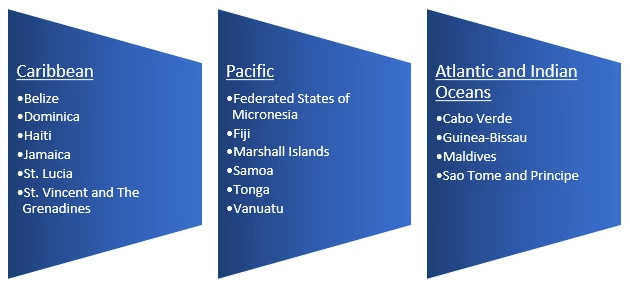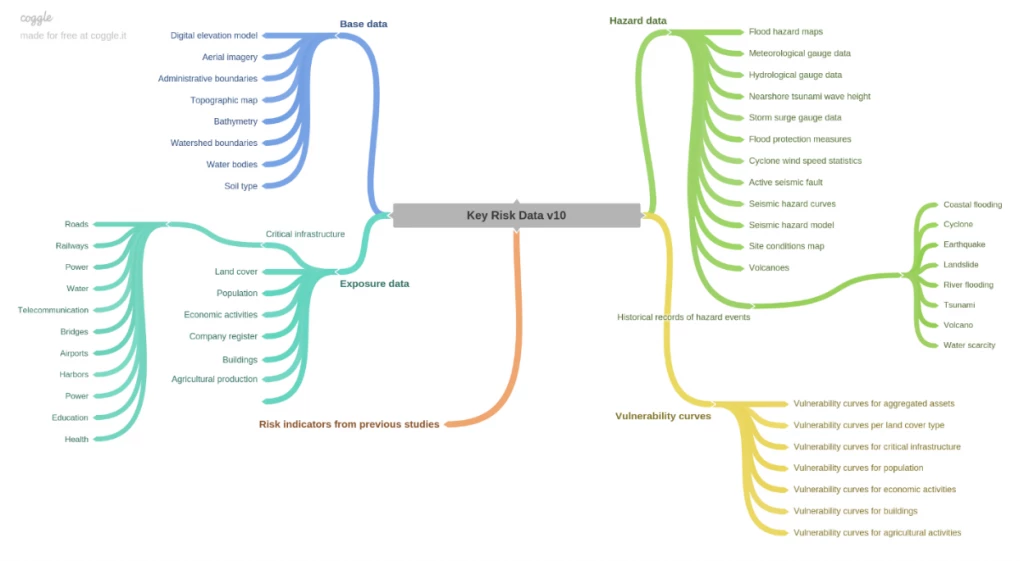Small island states are among the most vulnerable countries in the world to climate change and natural hazards. Right now, communities in the Bahamas are still rebuilding their lives after devastating impacts of Hurricane Dorian, a Category-5 storm that left some 13,000 homes destroyed. Could open data infrastructures make their task a little easier, by putting actionable information about communities and hazards at the fingertips of these countries' decision-makers?

(NASA Worldview/EOSDIS/Handout
Among the 57 countries or territories recognized as Small Island Developing States (SIDS) by the United Nations, efforts to strengthen access to a scientific evidence base on disaster risk have already been extensive. However, a review of datasets conducted by the Open Data for Resilience (OpenDRI) initiative uncovered interesting findings about the re-use and sharing of this vital information.
OpenDRI is a program of the Global Facility for Disaster Reduction and Recovery (GFDRR). For this review, we checked the availability of 36 key datasets which a group of partner institutions consider important for disaster risk management. The full list of datasets that we searched for ranges from simple to more specialized: from administrative boundaries, through to flood hazard maps, as well as bathymetric images depicting seafloor depths that are essential for coastal engineering designs.

OpenDRI Index: benchmarking data availability
We checked whether these datasets can be found online for a sample of 16 small island states. But datasets that exist behind closed doors, gathering dust on a shelf, are of less help for disaster management than well-documented datasets on an open data portal. These data access barriers can mean more effort to find, access and understand data; duplicative creation of datasets that already exist; and slower response times. As such, we also checked whether the datasets meet a set of openness criteria: can they be downloaded; without a fee; in a machine-readable format; and with basic documentation?
Across the 16 countries that we searched for, only about 8% of the datasets on our list were fully available and open. Around 70 more datasets could be found via a web search, but with restrictions on their use. The remainder of datasets were either closed or not yet created.

Open data, better policies
So what restrictions apply to those 70 datasets in our 'restricted' category, and why does this matter?
We found many datasets available for download but without the key information ('meta-data') describing what the files contain. Meta-data standards are a key plank of open data policy. Files that can be downloaded but with no information on units of measurement, creation date, or modeling assumptions cannot be re-used for future studies.
We also found datasets available only with permission or at cost; and examples of valuable data that can be downloaded in scanned PDF form, rather than a machine-readable format (such as shapefile or TIFF) that analysts can use for their own studies.
Figure 3: Status of key risk datasets in selected small island states
Putting risk data to work
Our review found considerable areas of strength in how small island states manage their geospatial data. Saint Lucia and Haiti both host open data portals that publicly curate data on the built environment, population exposure and key natural hazards. Data availability has been enriched by initiatives such as the Caribbean Handbook on Risk Management (CHaRIM) and projects by the Secretariat of the Pacific Community (SPC). Open data infrastructures such as Geonode, a tool developed by GFDRR Innovation Labs and the Geonode community, have been widely used in small island states.
Nevertheless, we saw clear evidence in favor of strengthening data management and open infrastructures in small island states. In short, creating data on natural hazard risk is the hard part. Making that risk information openly reusable also needs to be a high priority. We recommend a number of cost-effective steps to make existing risk information work harder to protect vulnerable communities in small island states:
- Conduct a data inventory. Ahead of developing new policies or projects to reduce natural hazard risks, a systematic inventory of key data requirements should be conducted.
The OpenDRI Index can be used to implement a data inventory, identify data gaps and related barriers (technical, legal and cost), and discuss the results with stakeholders including data producers and donors.
- Publish disaster risk data openly. Sharing datasets in machine-readable format, with metadata and an open license, on an openly available portal has many benefits: agency staff can more easily include scientific data in their decision-making, and costly duplication of data collection is less likely.
A growing number of Small Island States, such as St Lucia (https://data.govt.lc/), manage their own national open data initiative. For technical users, GFDRR and its partners have created an open risk data schema and library dedicated to storing and sharing risk datasets specifically developed and used for risk modelling.
- Reinforce open data programs with community mapping. Community mapping is a low-cost and efficient way to strengthen open data infrastructures and add crucial information on aspects such as the built environment, population, flood propensity, and drainage infrastructure.
The Open Cities program of GDFRR has supporting 12 cities in Africa to collaborate with local communities of mappers to produce digital maps using OpenStreetMap, mobile data collection and drone technologies (https://opencitiesproject.org/).
- Support open data policies. The aim of an open data policy is to help remove the legal, technical and economic barriers to data sharing. This may include the adoption of an open license for government data, the adoption of open data standards regarding formats and data quality.





Join the Conversation